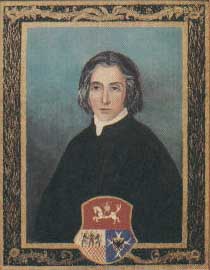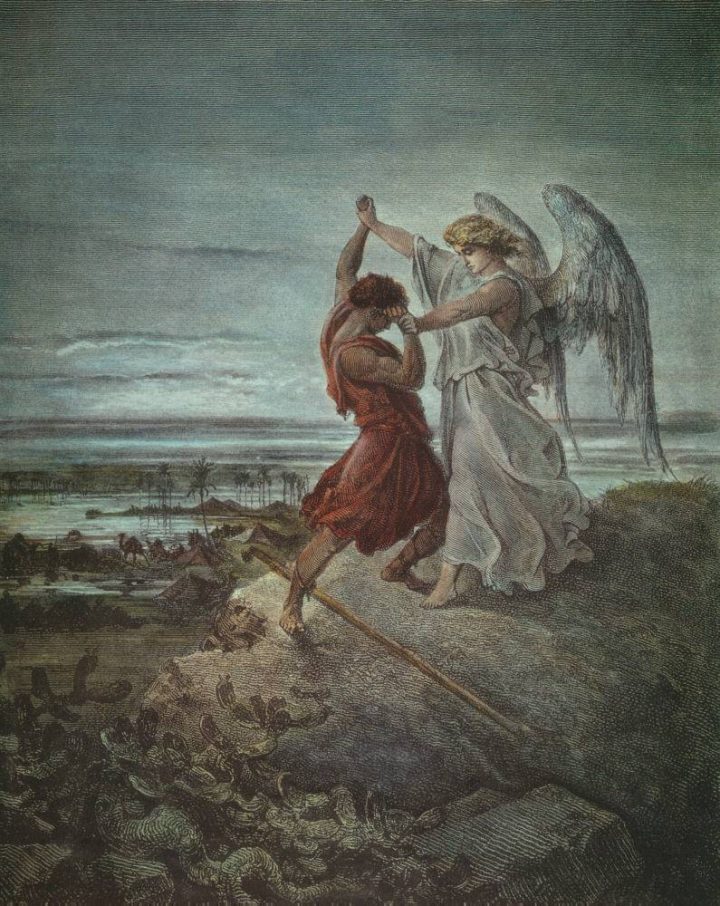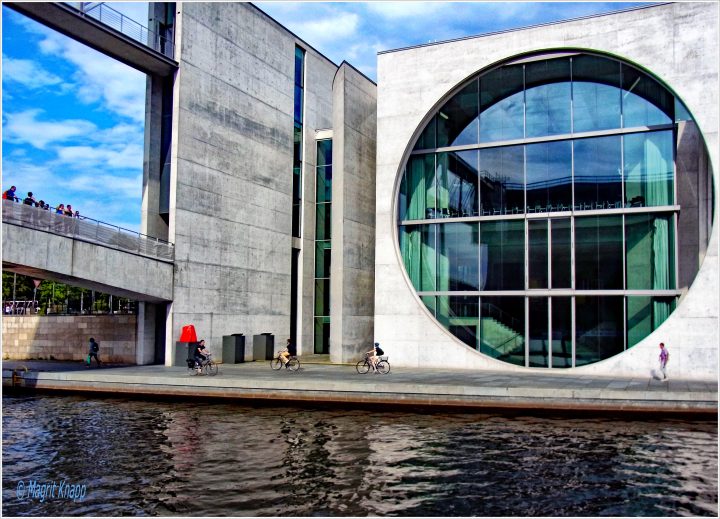
Once upon a time in America I was looking for an ironic story hook that would launch the development of a screenplay and a movie. I’m a screenwriter, film producer, and part-time Catholic apologist.
It was 2012 when I received a telephone call from a Catholic follower in Australia who knew the various hats I wore. He pitched me a story idea he thought would make a popular movie and at once promote the uniqueness and redemptive power of Catholicism.
Ironically, the story was not about anything in Australia, but rather an Early American tale that had taken place in what is now West Virginia, not too far from where I lived. At first it sounded like one of those strange, fabricated Internet legends that was too far fetched to be true. But research revealed it was not only true but well documented, and an important part of Catholic history in America.
You may have heard of the tale. It’s oddly known as the Wizard Clip Haunting, which occurred in what is today Middleway, West Virginia. The name comes from the wizardly way the invisible hands of a demon hauntingly clipped crescent moons from cloth at Adam Livingston’s farm after a traveling stranger had died in the house. In the years after, far more terrifying disturbances occurred which drew the brave and the curious from miles around. Today in Middleway the village still carries the nickname “Clip Town,” and displays cryptic badges on the front of the buildings that were around at the time in 1797.
I realized that the importance of the tale was this: It miraculously, dramatically and publicly documented the validity of the Catholic priesthood and the power of the Sacraments, especially the prayers of the Mass and the Eucharist. Along with our first Bishop, John Carroll, the two priests who were eye witnesses to the events were Fr. Denis Cahill (that’s Denis with one “n”) and Fr. Demetrius Augustine Gallitzin. Gallitzin is also known as the Apostle of the Alleghanies and Servant of God, with his cause for sainthood advancing in Rome.
This all fascinated me. I wrote a screenplay titled “The Wizard Clip Demon,” about the hauntings, the exorcism, and a few of the colorful characters. The screenplay received some minor interest in Hollywood. But there’s an adage in the movie industry that caused me to pause—first, write book, sell a million copies, then you can finance the movie.
Meanwhile, associates asked what part of the story was true and what happened to the real life characters? All of the major plot points were historically documented, as were the lives of the major characters … except for one, and a very important character he was—Fr. Denis Cahill. There was no history of his life after the events in Middleway, although he has been fondly remembered in the many versions of the story and he had founded six parishes in the years prior.
What happened to Fr. Denis Cahill?
Curiosity got the best of me. So I made a 10-day trip to West Virginia, Maryland, and Pennsylvania and there interviewed historians, archivists, trapsed through woods and creeks, visited museums, and spent a day crawling through the historical archives at St. Mary’s Seminary in Baltimore.
About Cahill I found nothing that was satisfying. Although, I collected several exceptional letters between Denis Cahill and Bishop John Carroll. The letters were not friendly. The men had a contentious relationship with threats tossed in both directions.
On my way out of the archives, the head archivist, asked if I had found what I was looking for. I said, no. She then told me an elderly historian had inquired about Cahill several years earlier and had found something of interest, although not in the Baltimore archives. The historian was Edythe Darrow, but she had no doubt passed away, since she was quite old at the time. In my van I searched the Internet for the name of the newspaper Edythe had been writing for. But on a hunch, I typed in “Edythe Darrow.” Up came a phone number. I called it. A man answered. It was Edythe’s nephew, her caregiver. That night I took Edythe to dinner and we had a good talk about the Wizard Clip and Denis Cahill. She had answers. I was both thrilled and shocked. She told me where to look. The next morning I visited the Historic Berkeley County Courthouse in Martinsburg and saw the proof for myself. I broke out in a cold sweat.
What was it? I can’t tell you. It would ruin the story.
But I can tell you what I discovered in the process. The Wizard Clip hauntings were the direct consequence of the prejudice and persecution that the Early American (primitive) Catholic Church was under at the time. Further, it was the resolution of the hauntings, brought about by Fr. Cahill and Fr. Gallitzin, that resulted in the conversion of many hate-filled individuals, and significantly ended the persecution of Catholics in what is today the eastern panhandle of West Virginia.
The original source of the persecutions were the penal laws initiated by Henry VIII during his political and moral battle with the Vatican when Pope Clement VII, in 1529, refused to annul his marriage with Catherine of Aragon. The next year, in 1530, Henry took revenge on the Vatican. He convinced parliament to start work on what would come to be known as the penal laws. Over the coming years they:
- Confiscated all Catholic property, land, monasteries, convents, and possessions
- Made Henry the head of the newly formed Church of England
- Outlawed Catholicism in English life, and
- Transferred significant wealth from the Catholic Church to the English Crown.
The penal laws lasted roughly 250 years. With the Roman Relief Act of 1791 and others through 1926, the penal laws were finally, but not completely, nullified. In 2013, the British parliament passed the latest of these relief acts which allowed the spouse of the king or queen to be Catholic, but never the monarch, who must be Protestant.
In 1632 Lord Baltimore (George Calvert) was granted possession of the Maryland colony as a safe haven for Catholic settlers. At fist, laws were passed in the Maryland colony to give religious freedom to every one. But by doing so, the experiment didn’t last long. Soon, the population of Maryland became predominately Protestant and the Catholics were chased out of power, new laws were passed, and Catholics found themselves under penal laws once again. Among many other laws, Catholics refusing to take an oath against Catholicism forfeited their land.
In 1734, Catholic worship was prohibited in Pennsylvania.
In 1777, New York State’s constitution banned Catholics from public office (and would do so until 1806), and priests were still sought out and murdered by Protestant belligerents.
In 1834, in Massachusetts, a convent was burned to the ground.
In 1844 in Philadelphia, the City of Brotherly Love, anti-Catholic sentiment, combined with the country’s anti-immigrant mood, fueled the Bible Riots in which houses were torched, two Catholic churches destroyed, and at least 20 people were killed.
Even as late as 1960 (some of you may remember) the election of John F. Kennedy to the U.S. presidency was fraught with fears that the Pope would control America. My mother was sure she’d rather be dead than Catholic.
All this in spite of the Bill of Rights and the First Amendment of the Constitution which were ratified in December 1791. Culture is often more powerful than laws.
Since researching and becoming Catholic myself in 1998, all of this information fascinated me. I wanted to somehow communicate how it was that Catholicism was trapped in a gulf of prejudice – which had originated with an egotistical and adulterous English king and had infiltrated the culture of Protestantism, in which I was raised. And yet, it was because of the persecution and the church’s miraculous and sacramental response to it, that the persecution was mostly ended. That’s a lesson for us today. The Church gives us miraculous tools of prayer, blessings, and the sacraments to respond to a hateful culture with love and patient endurance.
As I drove home after visiting the crypt of Fr. Demetrius Gallitzin in Loretto, Pennsylvania, I realized that the story I was sitting on was not a screenplay, but a novel. A long one. I had both plot and motivation for a story about the demonic attacks on the primitive Catholic Church in America that sustained and strengthened the Church, securing the place of the sacraments and reinforcing the Eucharist as the source and summit of our Christian life.
Image: Demetrius Augustine Gallitzin




